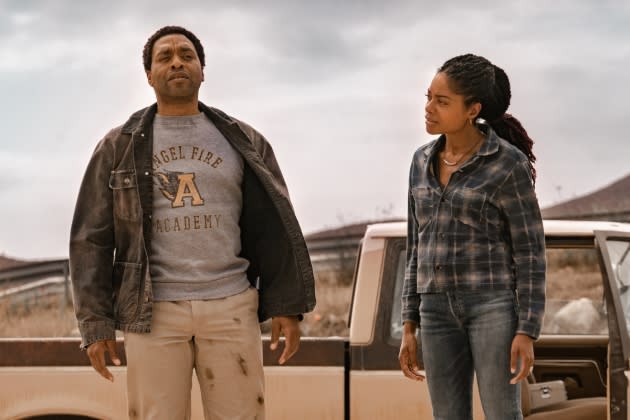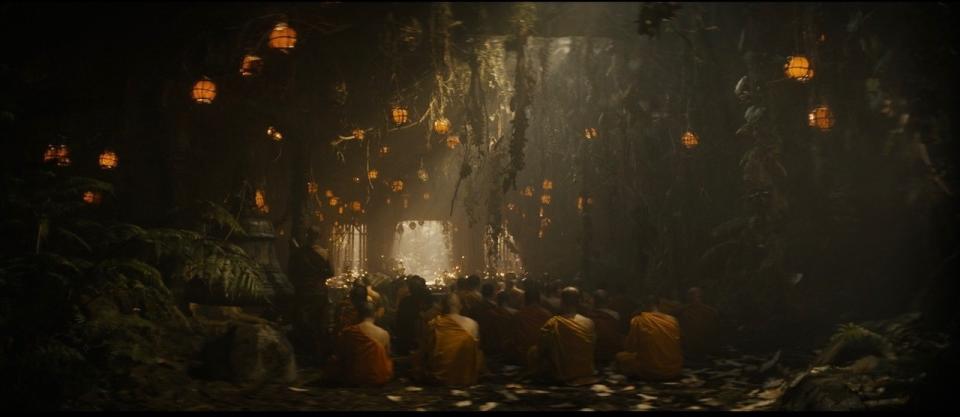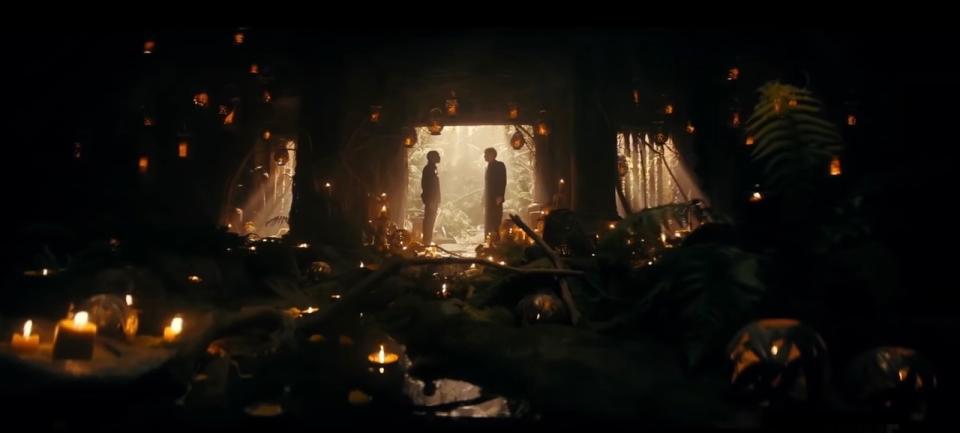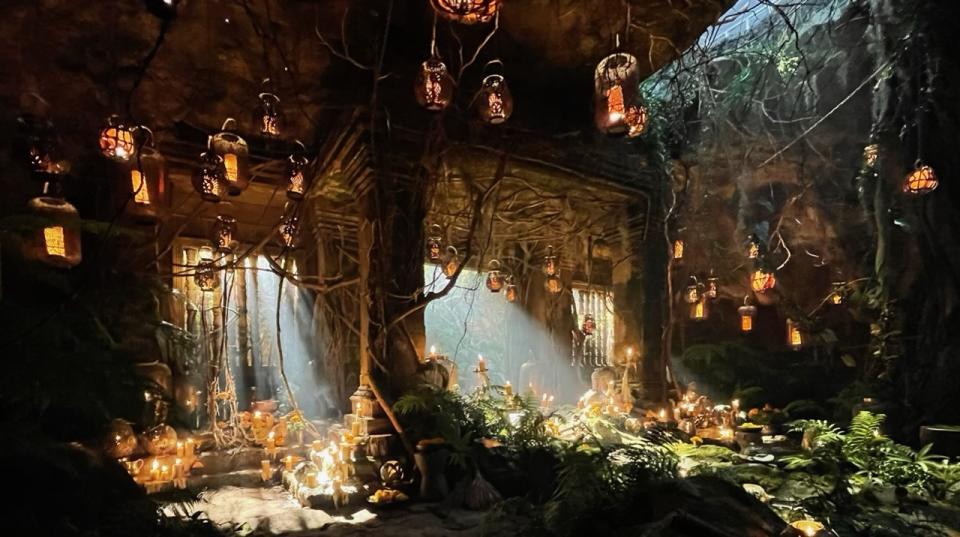‘The Man Who Fell to Earth’: How Cambodia’s Angkor Wat Temple Influenced James Merifield’s Key Set Design
- Oops!Something went wrong.Please try again later.

SPOILER ALERT: Do not read if you haven’t watched the ninth episode of “The Man Who Fell to Earth” on Showtime.
When production designer James Merifield first signed on to Showtime’s “The Man Who Fell to Earth,” he thought he might be traveling to Cambodia or some exotic jungle to build a key set on location. But then the pandemic happened, and he ended up building the key set for the season finale in the U.K., at Black Park in Slough.
More from Variety
The series, a continuation of the novel written by Walter Tevis and the legendary film starring David Bowie released in 1976, stars Chiwetel Ejiofor as the alien humanoid Faraday who crashes his spacecraft deep in New Mexico. Justin Falls, played by Naomie Harris, is the only person on earth who can assist in the survival of his species.
Episode 9 sees Falls and Faraday get kidnapped and taken to a cave where Pressman Thorn (Bill Nighy) is waiting for them. When they walk in, they find monks sitting and meditating as a man in a suit walks toward them. It is Thomas Newton, formerly known as Pressman Thorn.
The cave was inspired by Angkor Wat, the temple in Cambodia. “I had never been, but I started going through the internet, looking at photos and using that a reference for both our jungle and lair set,” explains Merifield.
Inspired by the twisting trees surrounding Angkor Wat, he emulated the design with copious amounts of palm trees, vines and alien leaves. “We built Cambodia at Black Park,” Merifield says.
James Merifield/Showtime
Merifield only built the trees 20 feet high, “then the rest was left to CGI set extensions.”
The tree roots were made from pipe lagging, the material used to insulate pipes during cold months. Says Merifield, “We coated the trees with plaster to make them look real — it gave them that textured finish.” When it came to the moss surrounding the temple, Merifield says, “that was made with good old fashioned sawdust. It was colored, dyed and glued over the rocks.”
For the cave’s interior, known as Newton’s Lair, a dilapidated old warehouse in Wembley, North London seemed appropriate for Merifield’s construction team to build in. “At the end of the episode in the lair, you see these monks in a call to prayer and there’s a massive bell with lanterns. Those were used for practical lighting,” he explains.
He also worked with concept artists to ensure there were fantastic shafts of light. “I had the idea that the giant crack in the ceiling which gives that shaft was from the roots of trees. They had eked their way through this crack to form their root bed under the earth as the tree does, hence making the crack widen over time and it became deeper and deeper. That then gave the DP and the gaffer an opportunity to light it that way.”
For the temple bell that sits by the shrine, Merifield first had to find a bell that was big enough. “It’s all about scale,” he says. “So, I had that bell made by a prop maker who carved it from polystyrene and then cast it in fiberglass. The timber frame that it is set within was also cast, and while it was a lovely prop, it was an expensive spend.”
Best of Variety
Sign up for Variety’s Newsletter. For the latest news, follow us on Facebook, Twitter, and Instagram.




